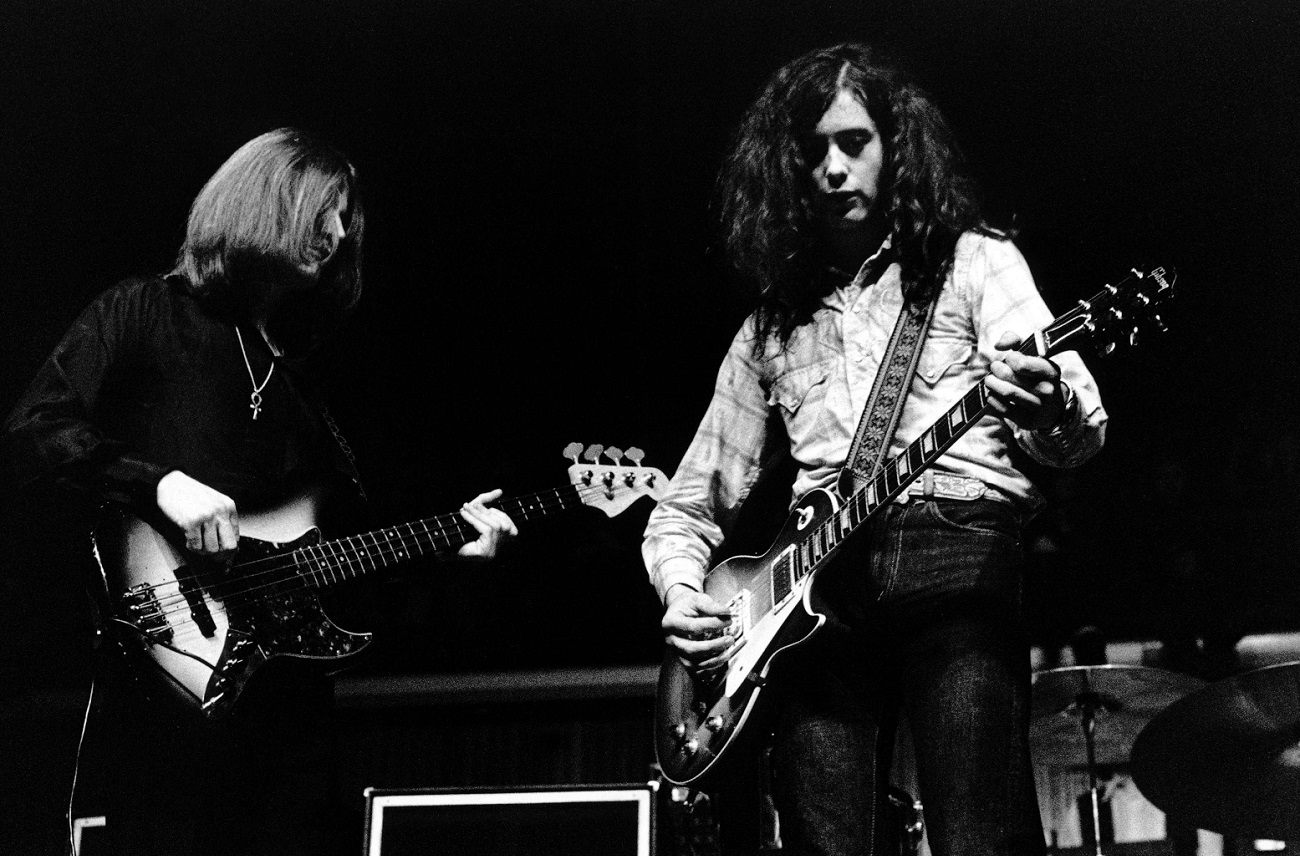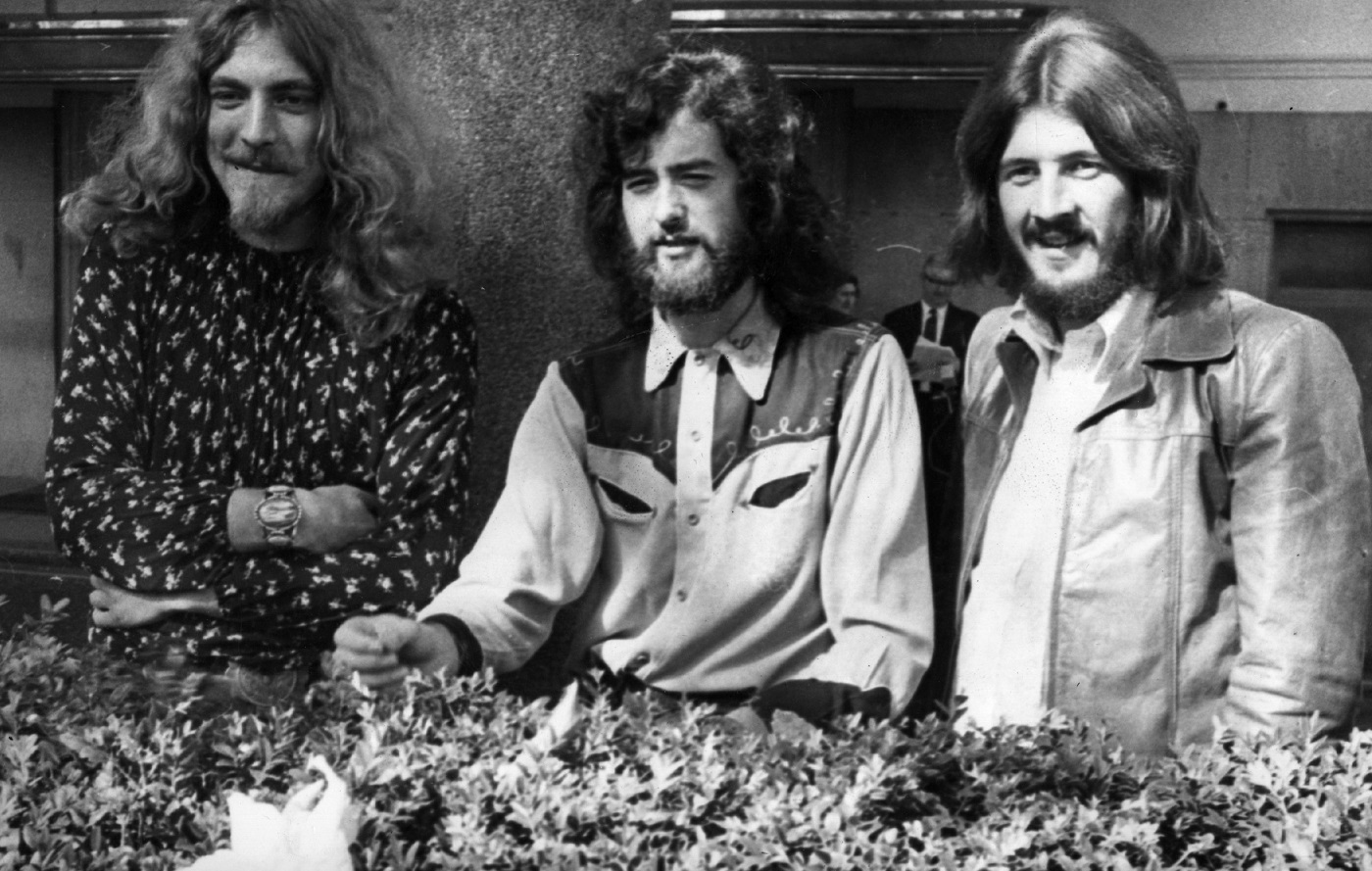Why Led Zeppelin’s ‘Celebration Day’ Featured Such an Unusual Beginning
When listeners dropped the needle on Led Zeppelin III (1970), they got hit right away with “Immigrant Song.” It was another dose of the heavy sound the band had showcased on the first two Led Zeppelin albums.
And, just as Zep had done on its previous releases, the band offered up a change of pace with the second track on III. After bringing down the hammer of the gods in the opener, listeners heard some studio chatter before Jimmy Page tore into the opening of “Friends.”
This track takes on an ominous tone almost from the start, with Page’s harmonies and John Paul Jones‘ string arrangement darkening the mood. Toward the end, you hear a Moog synthesizer enter the picture. As the other instruments lay out at the close of “Friends,” the Moog remains.
That droning sound continues straight into “Celebration Day,” track 3 of Led Zeppelin III. While it’s an interesting effect, it wasn’t anything Page and Led Zeppelin planned for the album. According to Page, the group had to make “Celebration Day” that way out of necessity.
Led Zeppelin lost the start of the rhythm track to ‘Celebration Day’ in the studio

While rock fans had heard albums without breaks between songs (see: The Beatles’ Sgt. Pepper), Led Zeppelin’s Moog synthesizer segue definitely sounded unique. And Page, Zep’s producer, said he didn’t map it out that way.
Speaking with Brad Tolinski of Guitar World in 1993, Page explained how “Celebration Day” became a problem in the studio. “I was listening through the headphones and nothing was coming through,” he said. “I started yelling, ‘What the hell is going on!'”
Page didn’t like the answer he got to that question. “I noticed that the red recording light was on what used to be the drums,” he recalled. “The engineer had accidentally recorded over [John Bonham]!” So Page had to get creative.
“That is why you have that synthesizer drone from the end of ‘Friends’ going into ‘Celebration Day’ until the rhythm track catches up,” Page told Guitar World. “We put that on to compensate for the missing drum track. That’s called ‘salvaging.'”
It’s unclear why John Bonham didn’t simply record the ‘Celebration Day’ drums again

Since Led Zeppelin often recorded as a band with minimal takes, you might raise a question with Page’s account. For example, why didn’t the band simply have John Bonham record another drum part? Theoretically, if Bonham were present, he could have done it in another take or two.
Led Zeppelin’s whirlwind recording style might provide the answer to that one. While the group recorded “Celebration Day” in the countryside, Page did his guitar overdubs back in London. So Bonham may not have been available right away. Or the band might not have wanted to start over on the backing track.
In Led Zeppelin: All the Songs, the writers include a story from Mick Wall’s Zep biography, When Giants Walked the Earth. In Wall’s book, Terry Manning (who helped Page mix III) said that Page crafted “Celebration Day” that way intentionally. According to Manning, no tape erasing occurred at all.
Given the wild cymbal effects Page used when Bonham’s drums enter the song, it’s hard to know where the experimentation stopped and the fixing began. But the legend of an assistant engineer — who fled the studio after realizing he erased a track on the new Led Zeppelin album — makes for the best story.


